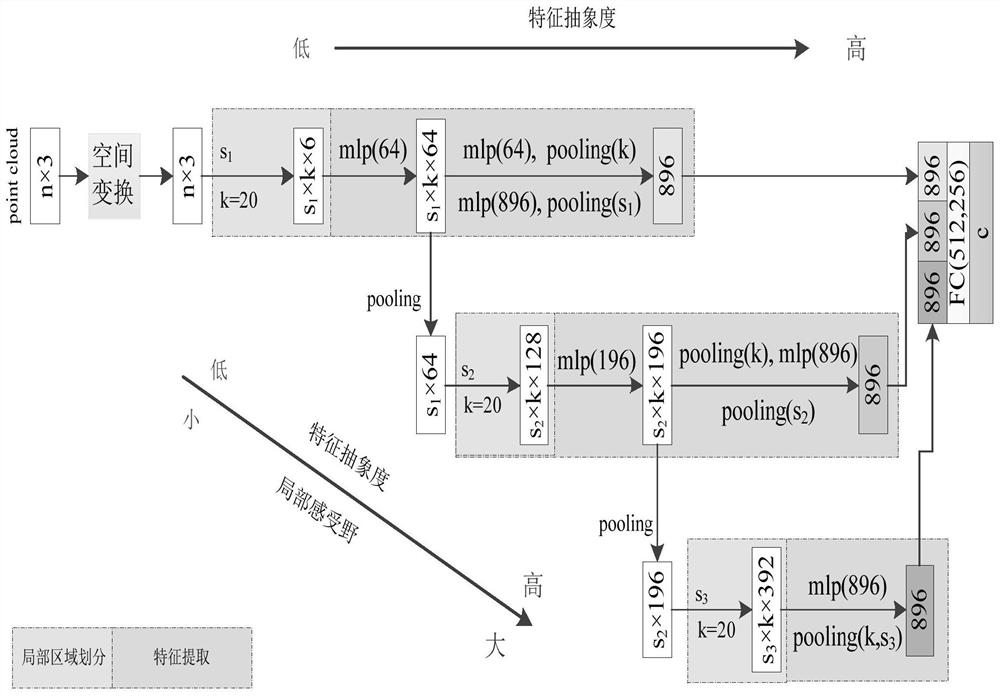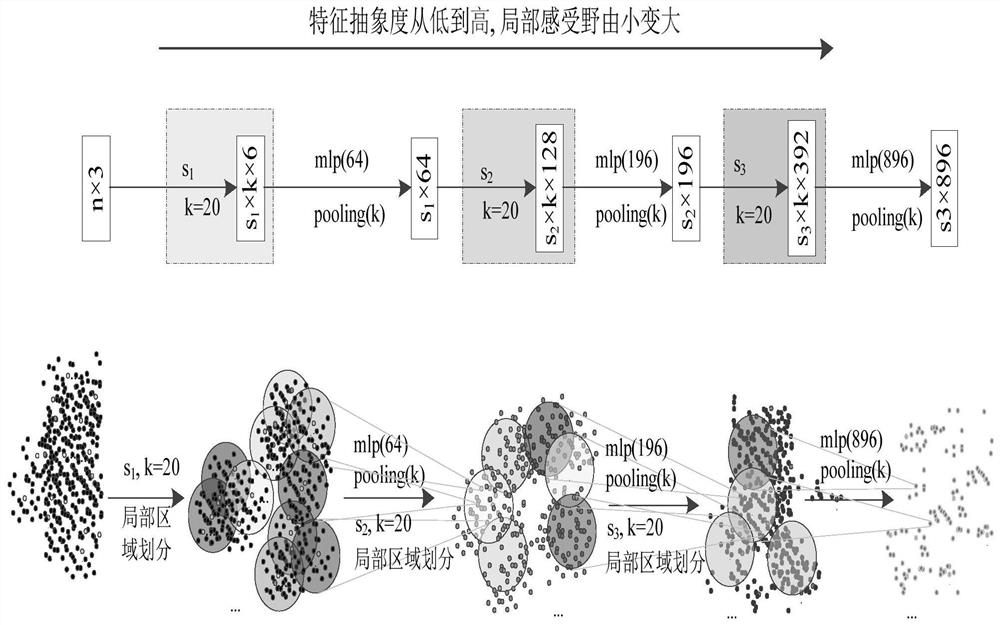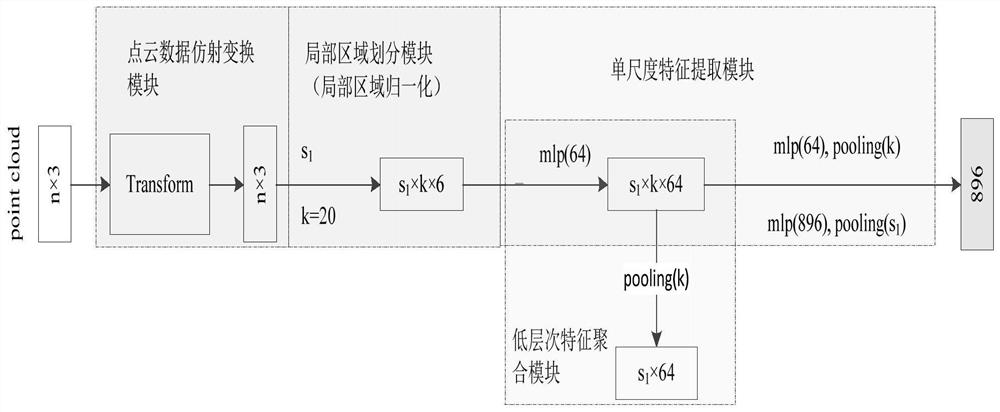Point Cloud Data Classification Method Based on Deep Learning
A point cloud data and deep learning technology, applied in the direction of instruments, computing, character and pattern recognition, etc., can solve the problems of unable to extract local features of point cloud data, unsatisfactory effect, disorder, etc., to ensure the invariance of affine transformation Effect
- Summary
- Abstract
- Description
- Claims
- Application Information
AI Technical Summary
Problems solved by technology
Method used
Image
Examples
Embodiment Construction
[0067] The present invention will be further described below in conjunction with specific examples.
[0068] The point cloud data classification method based on deep learning provided in this embodiment proposes a multi-scale point cloud classification network. The receptive field is getting larger and the basic features of feature abstraction are getting higher and higher. Based on the completeness, adaptability, overlapping and multi-scale characteristics of local area division, a multi-scale local area division algorithm is proposed to complete the data classification. . Such as figure 1 As shown, shows our overall network structure, n in the figure is the number of points; s 1 >s 2 >s 3 , are three different local area scales from small to large; k is the number of point clouds contained in the local area; c is the number of classes; pooling(k,s) means to pool k points in each local area first Then perform a pooling operation on all the information contained in each l...
PUM
 Login to View More
Login to View More Abstract
Description
Claims
Application Information
 Login to View More
Login to View More - R&D
- Intellectual Property
- Life Sciences
- Materials
- Tech Scout
- Unparalleled Data Quality
- Higher Quality Content
- 60% Fewer Hallucinations
Browse by: Latest US Patents, China's latest patents, Technical Efficacy Thesaurus, Application Domain, Technology Topic, Popular Technical Reports.
© 2025 PatSnap. All rights reserved.Legal|Privacy policy|Modern Slavery Act Transparency Statement|Sitemap|About US| Contact US: help@patsnap.com



